site search
online catalog
CIVIL WAR PRISONER OF WAR CAMP ART: CARVED POWDER HORN OF LT. ROBERT E. SMITHSON, 77TH OHIO, CARVED WHILE PRISONER AT TYLER TEXAS, SEPTEMBER 1863
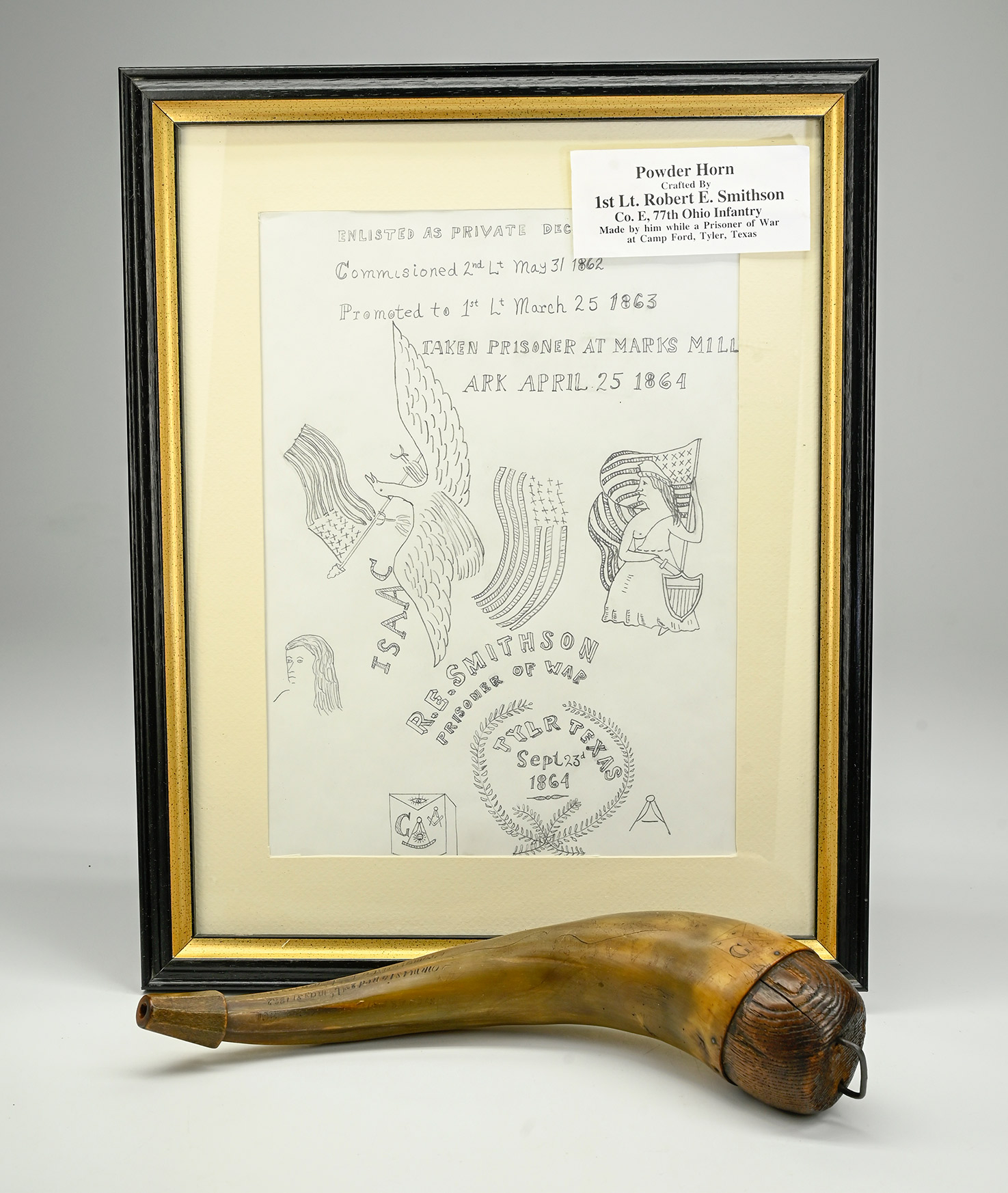
Hover to zoom

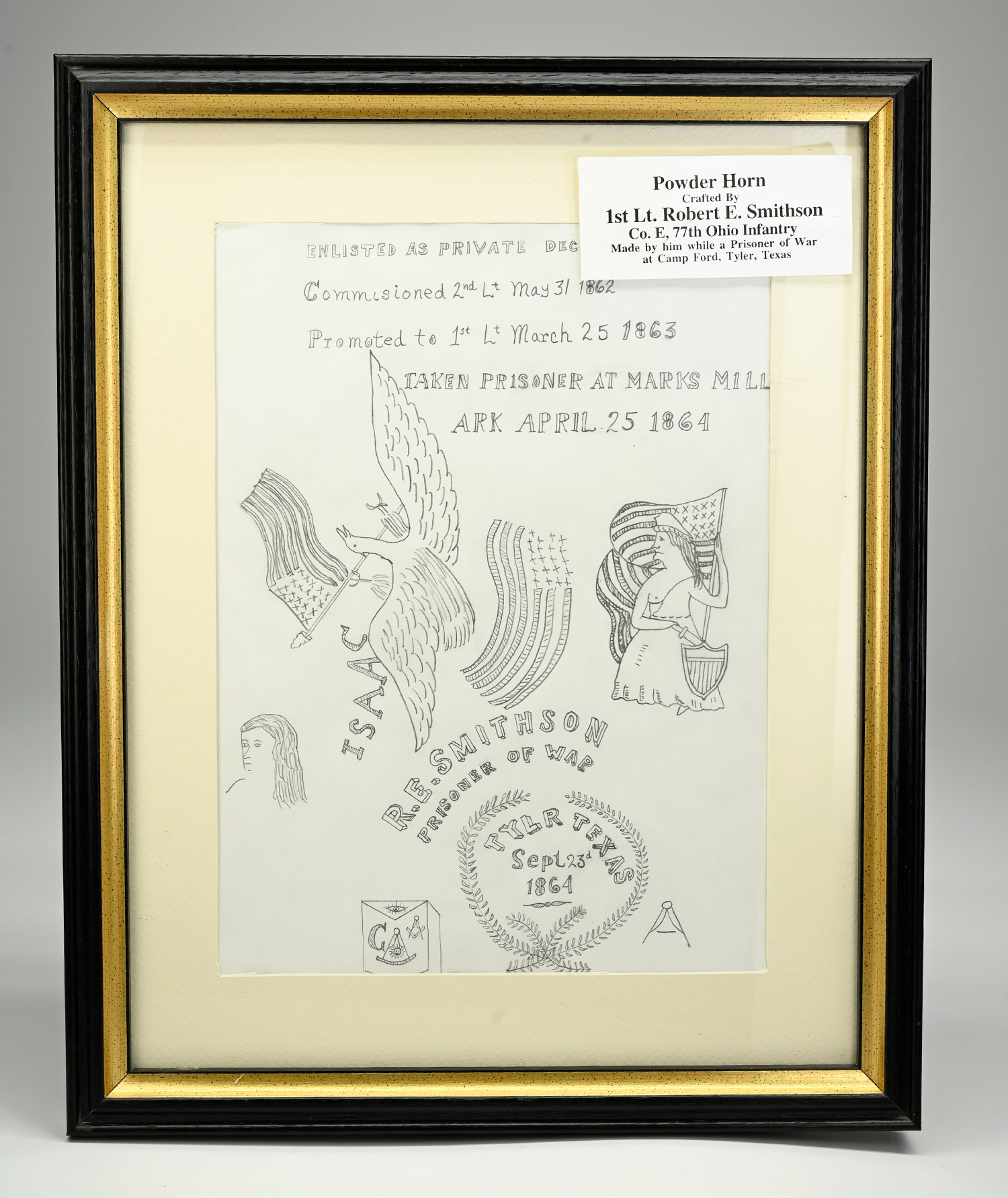
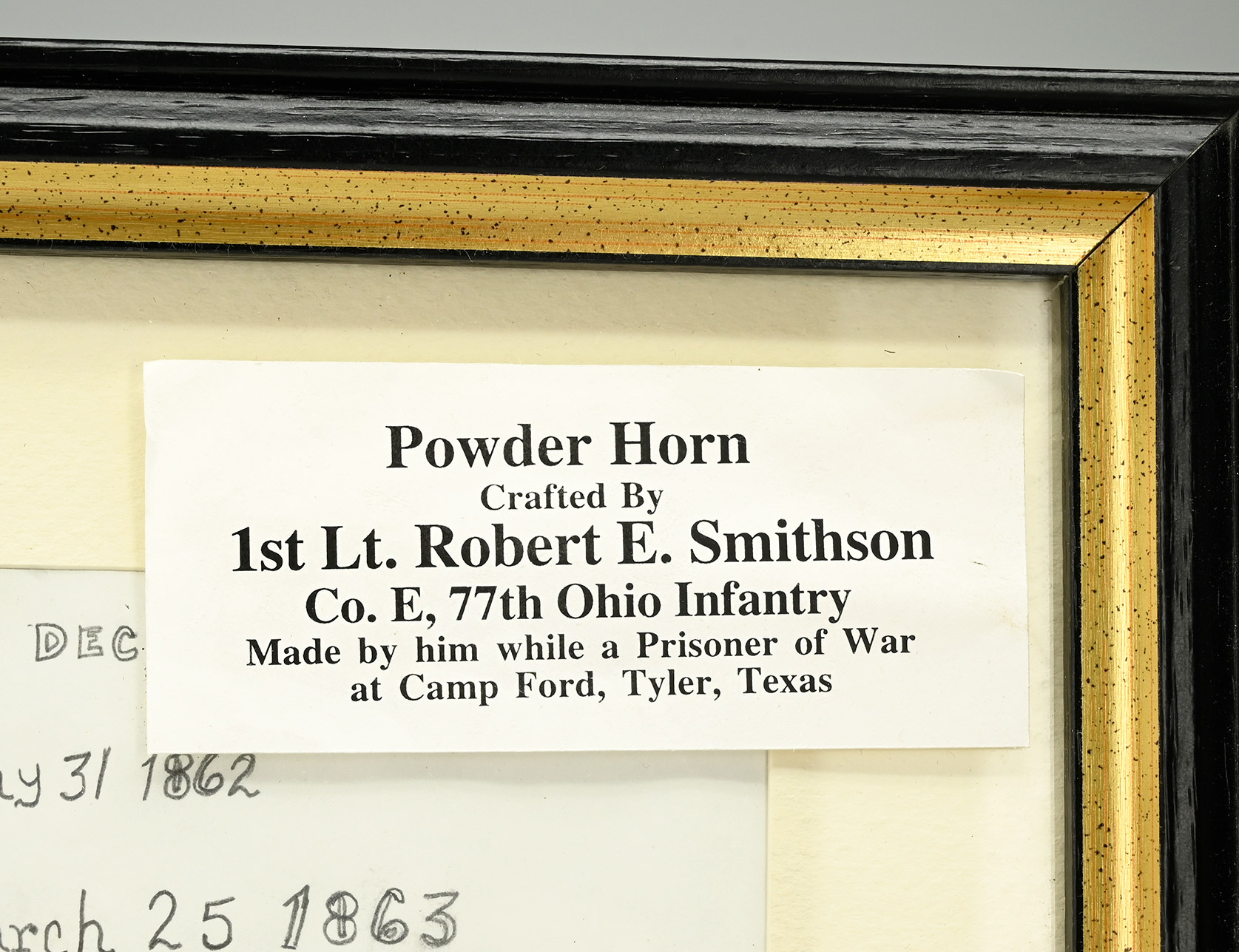
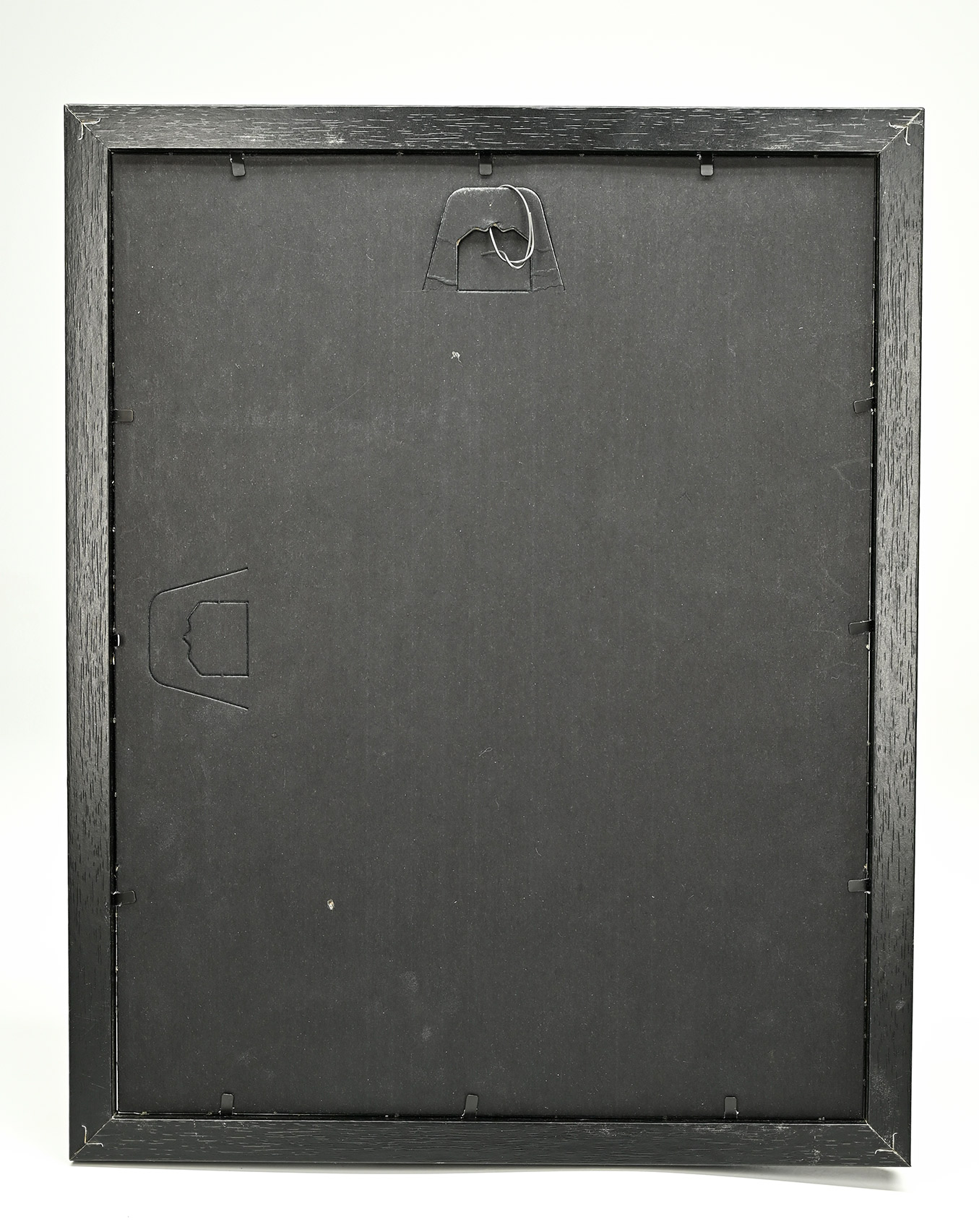
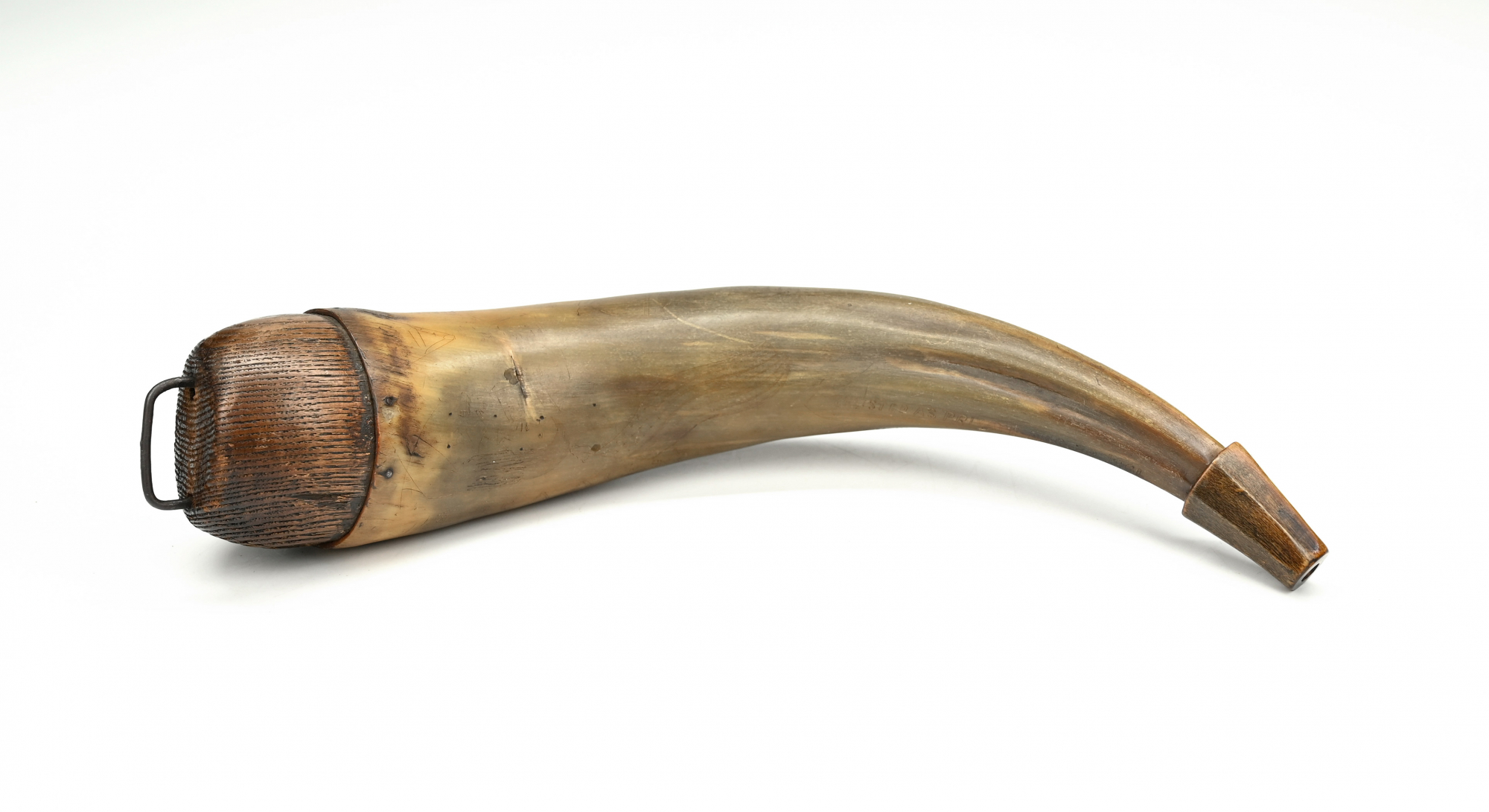
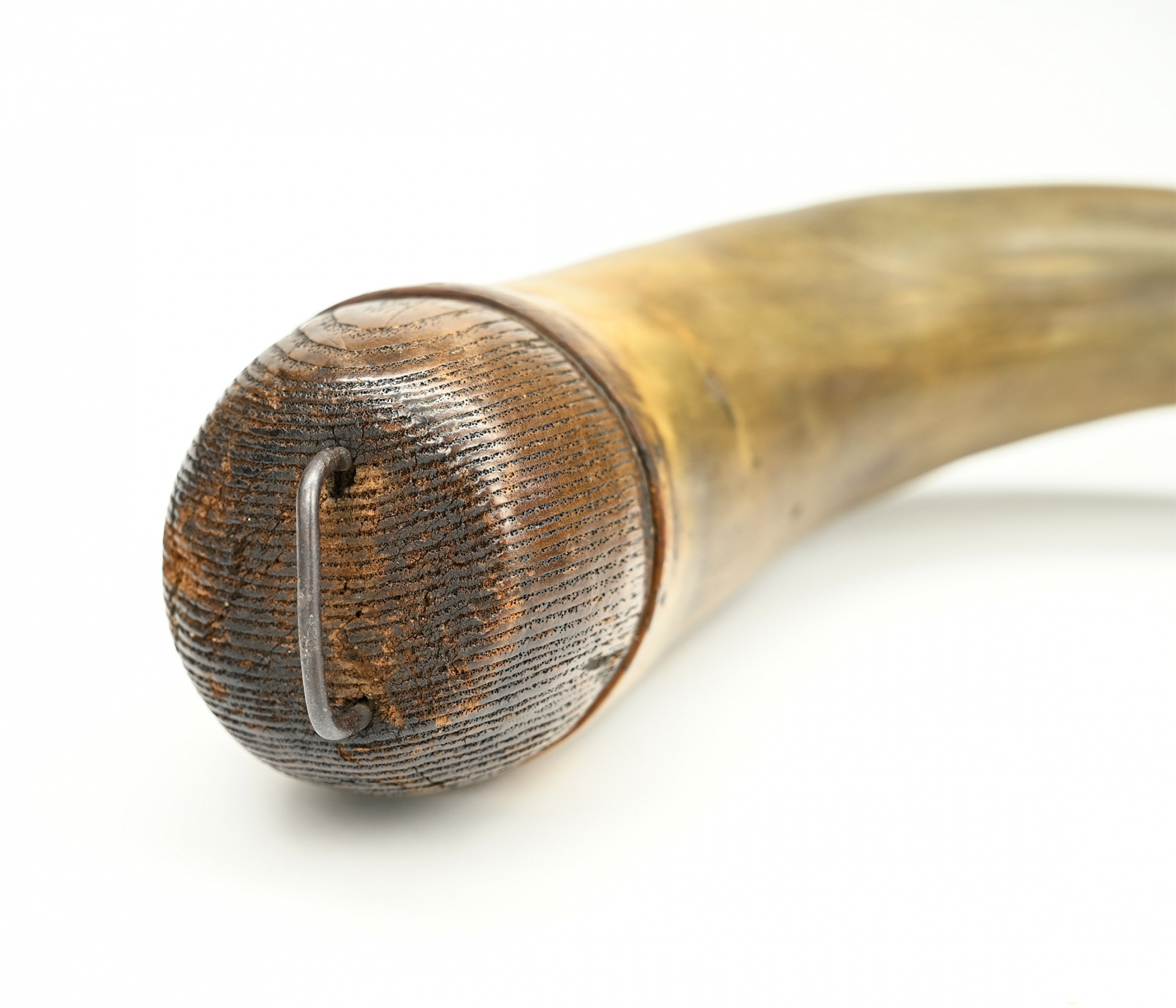
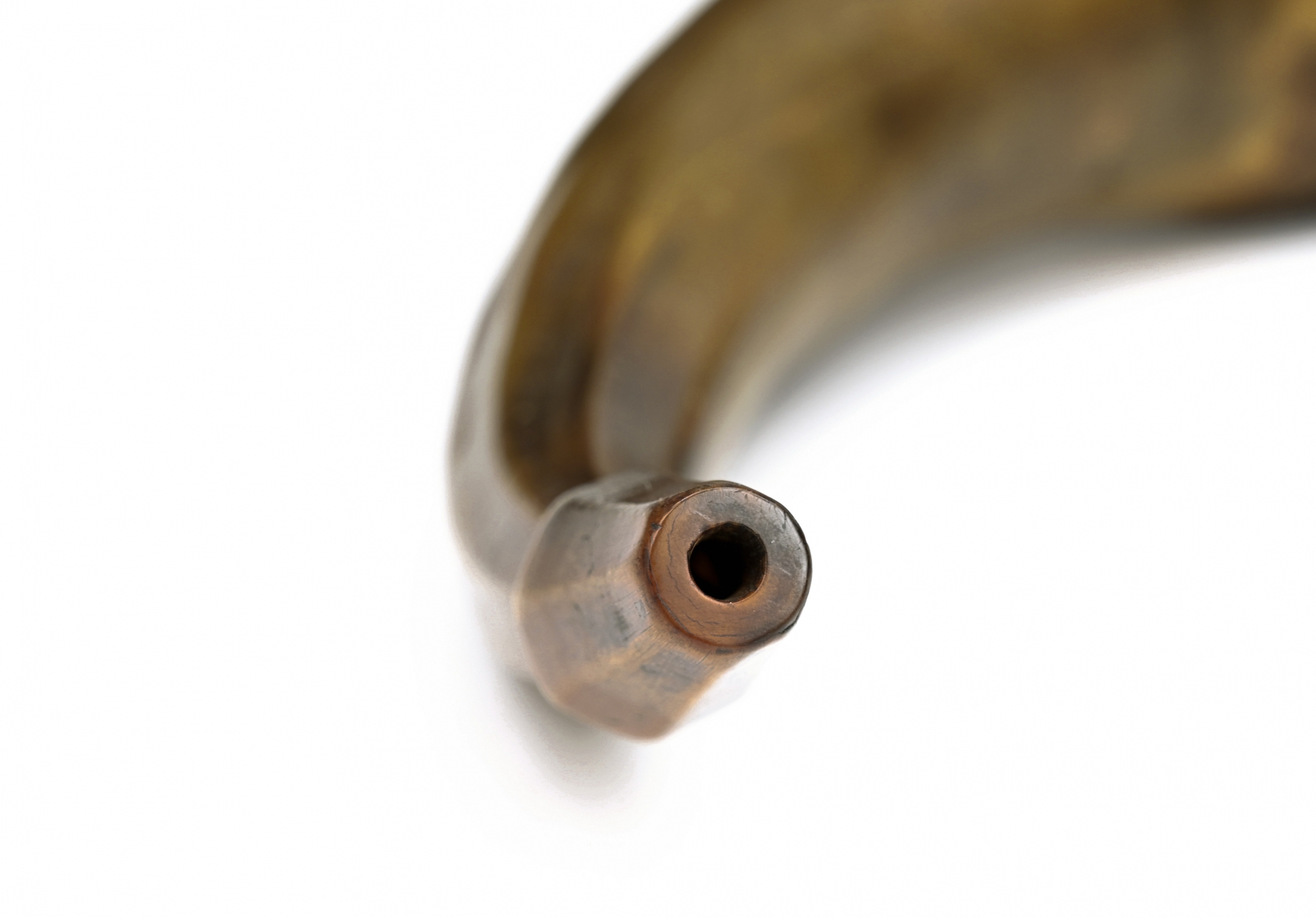
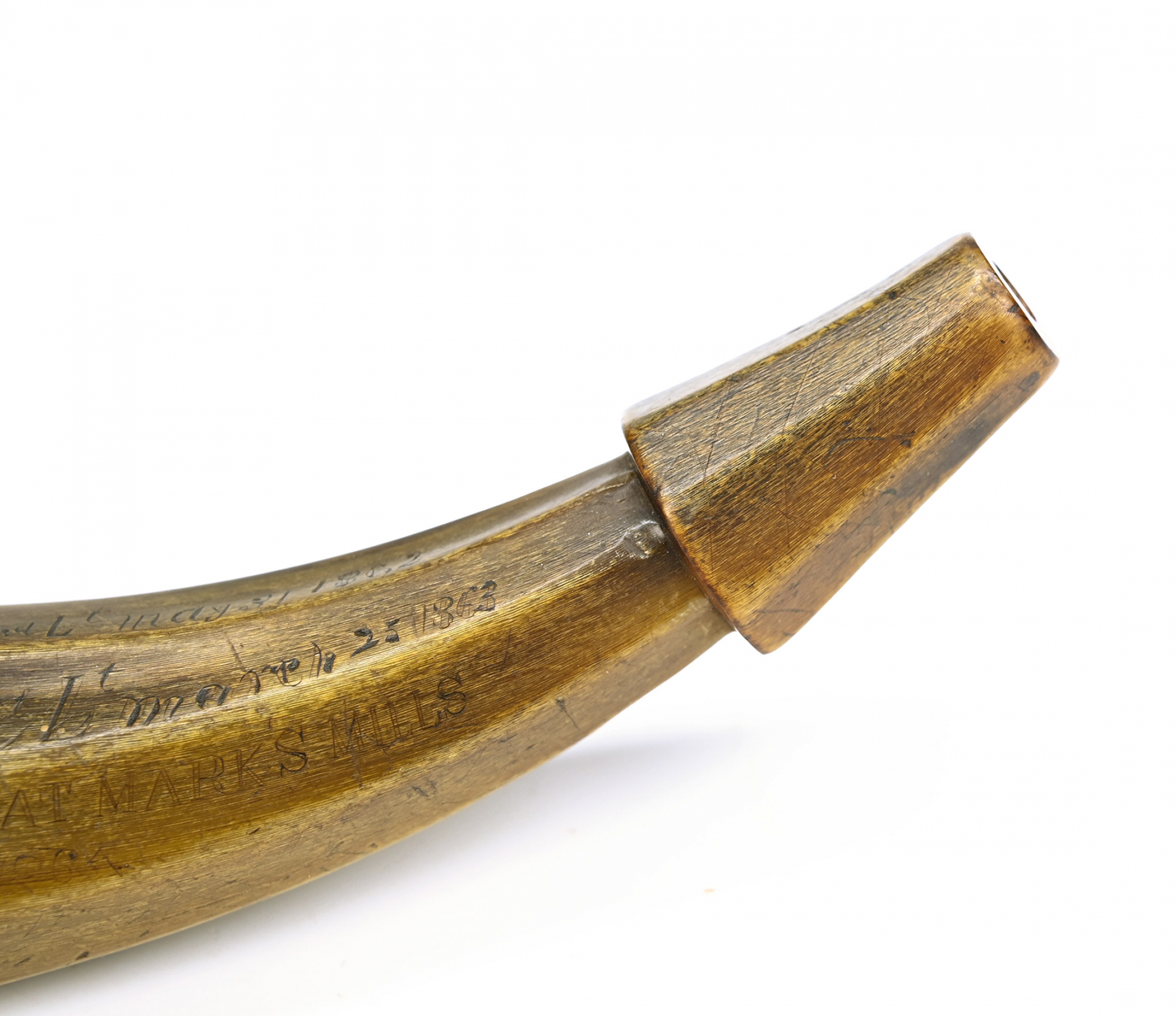
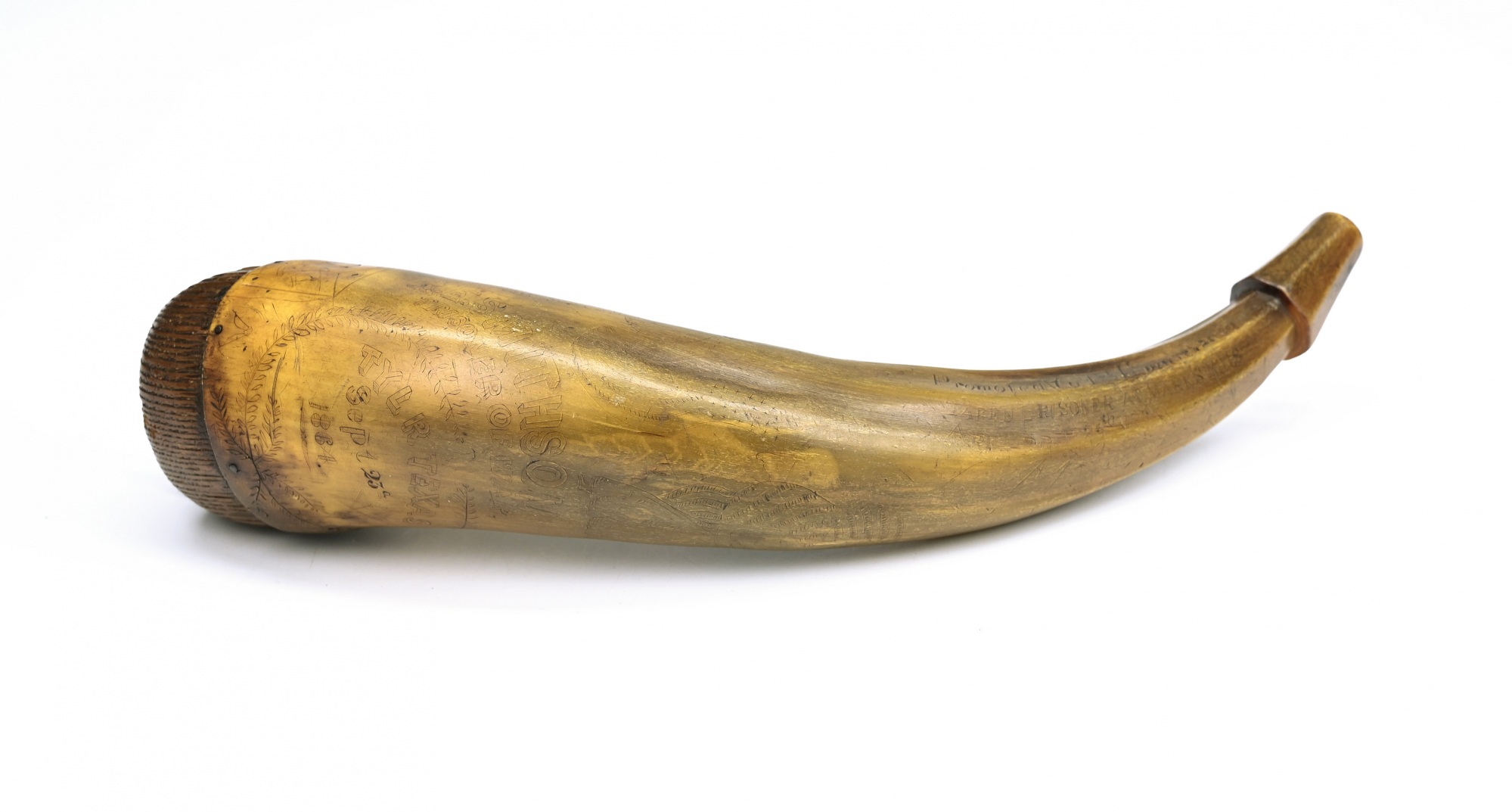
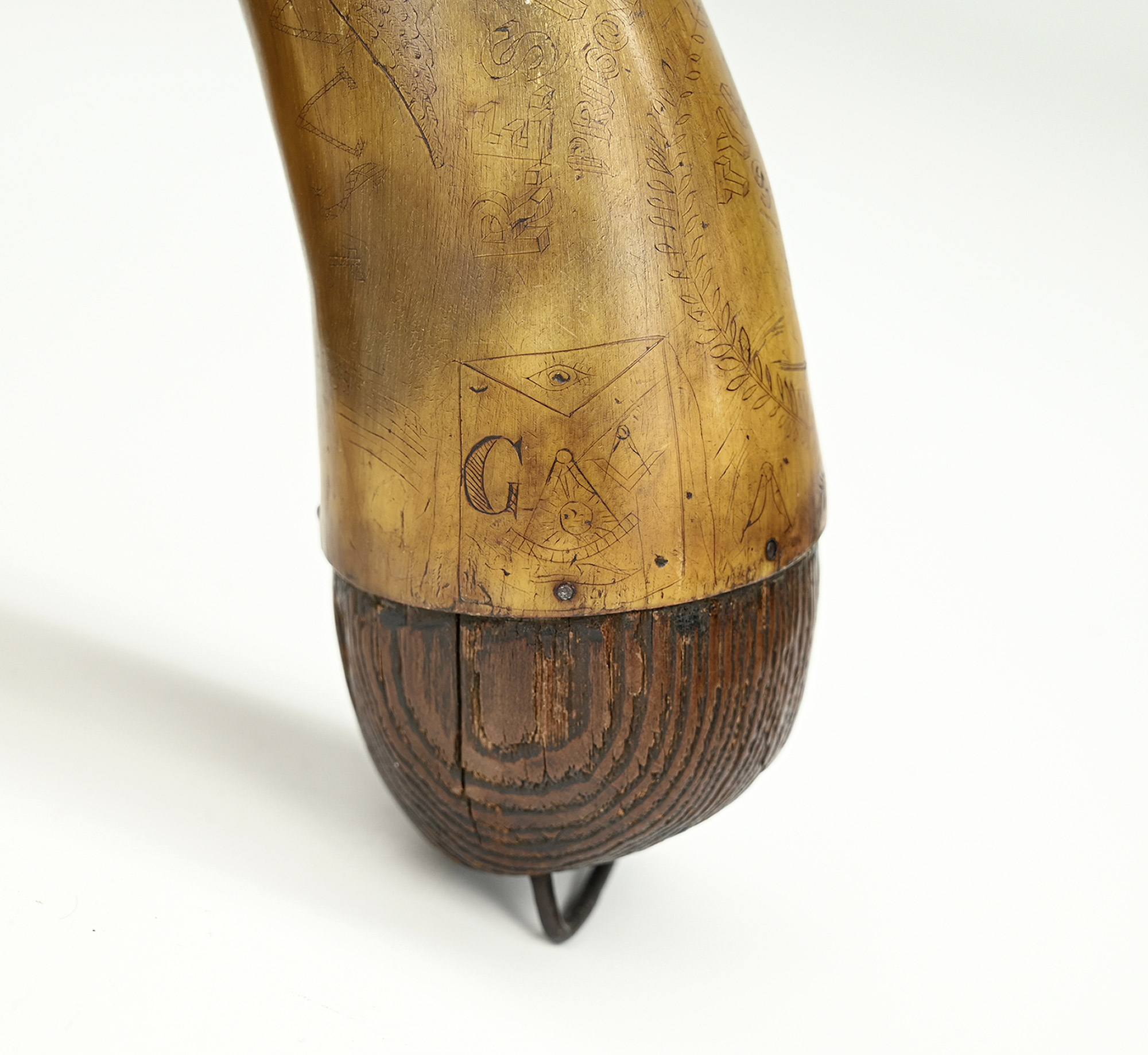

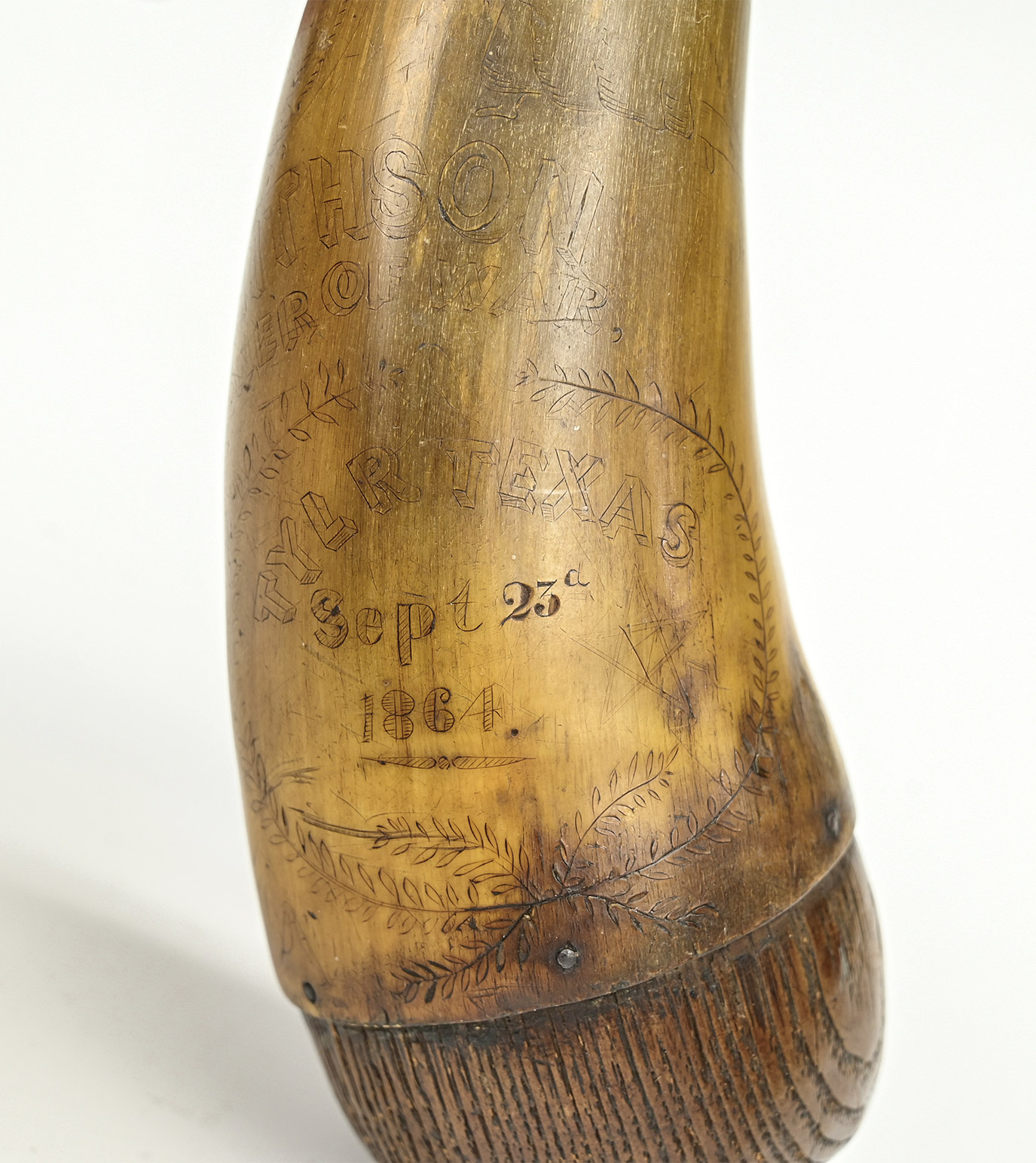
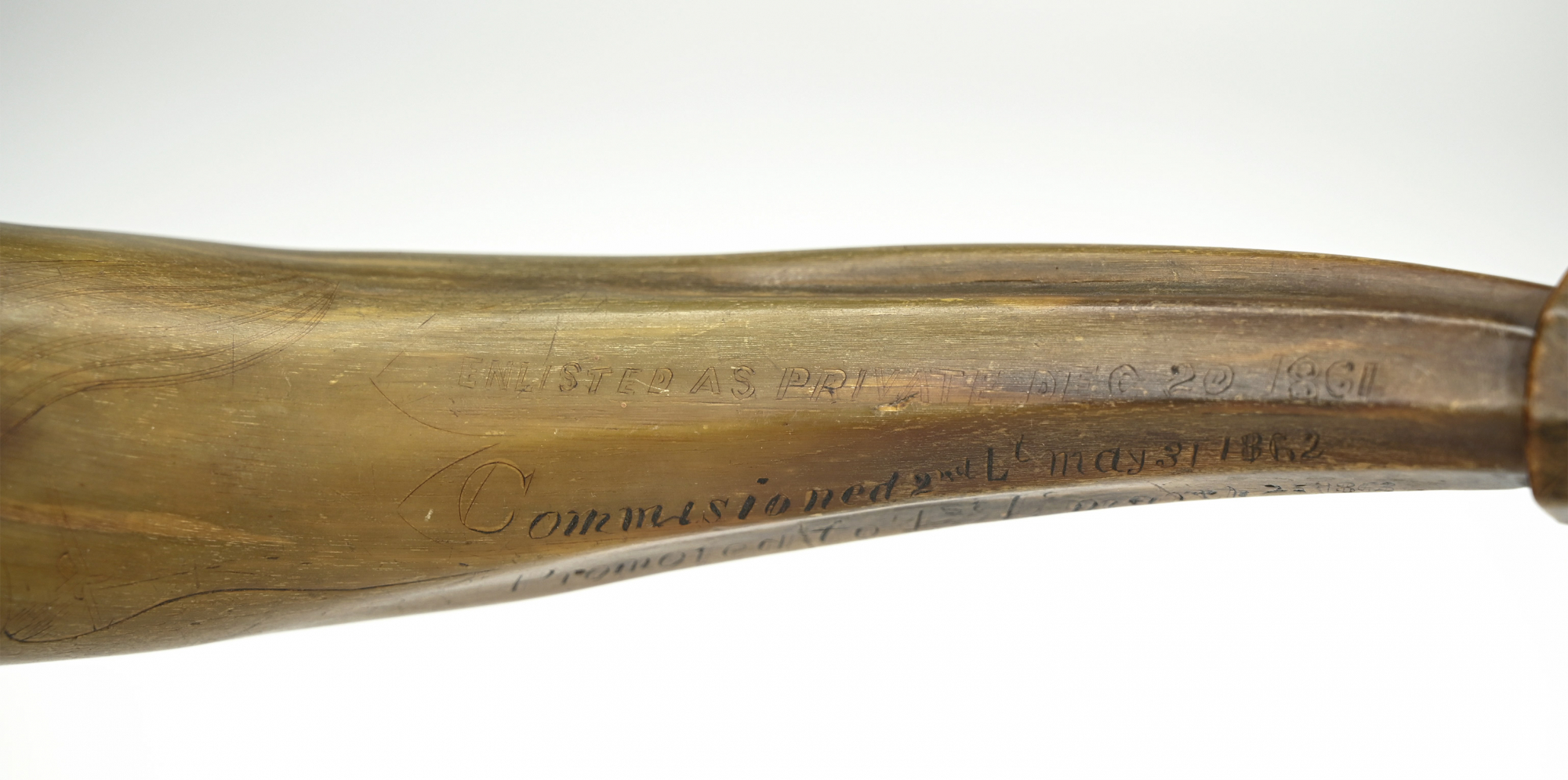
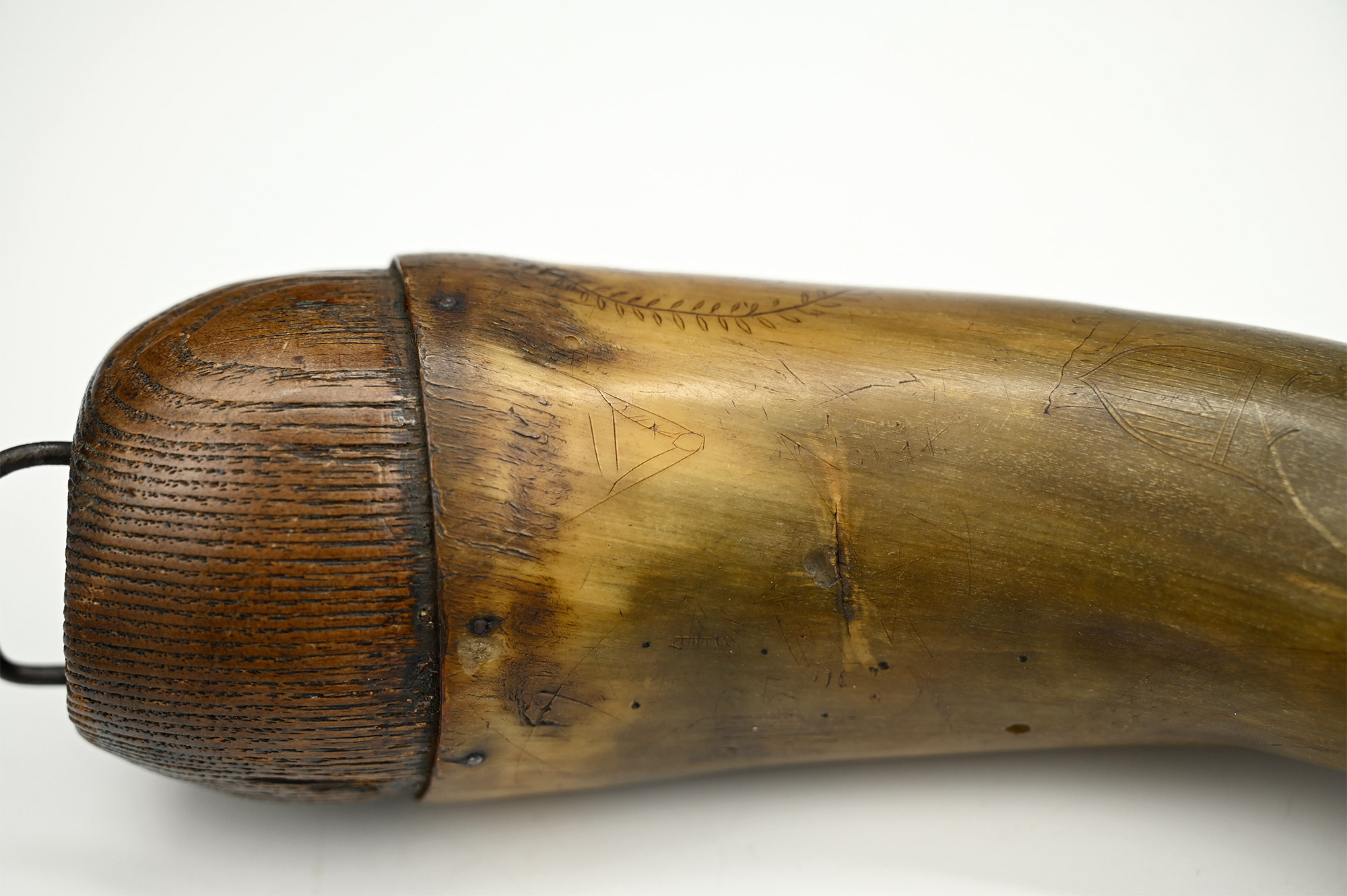
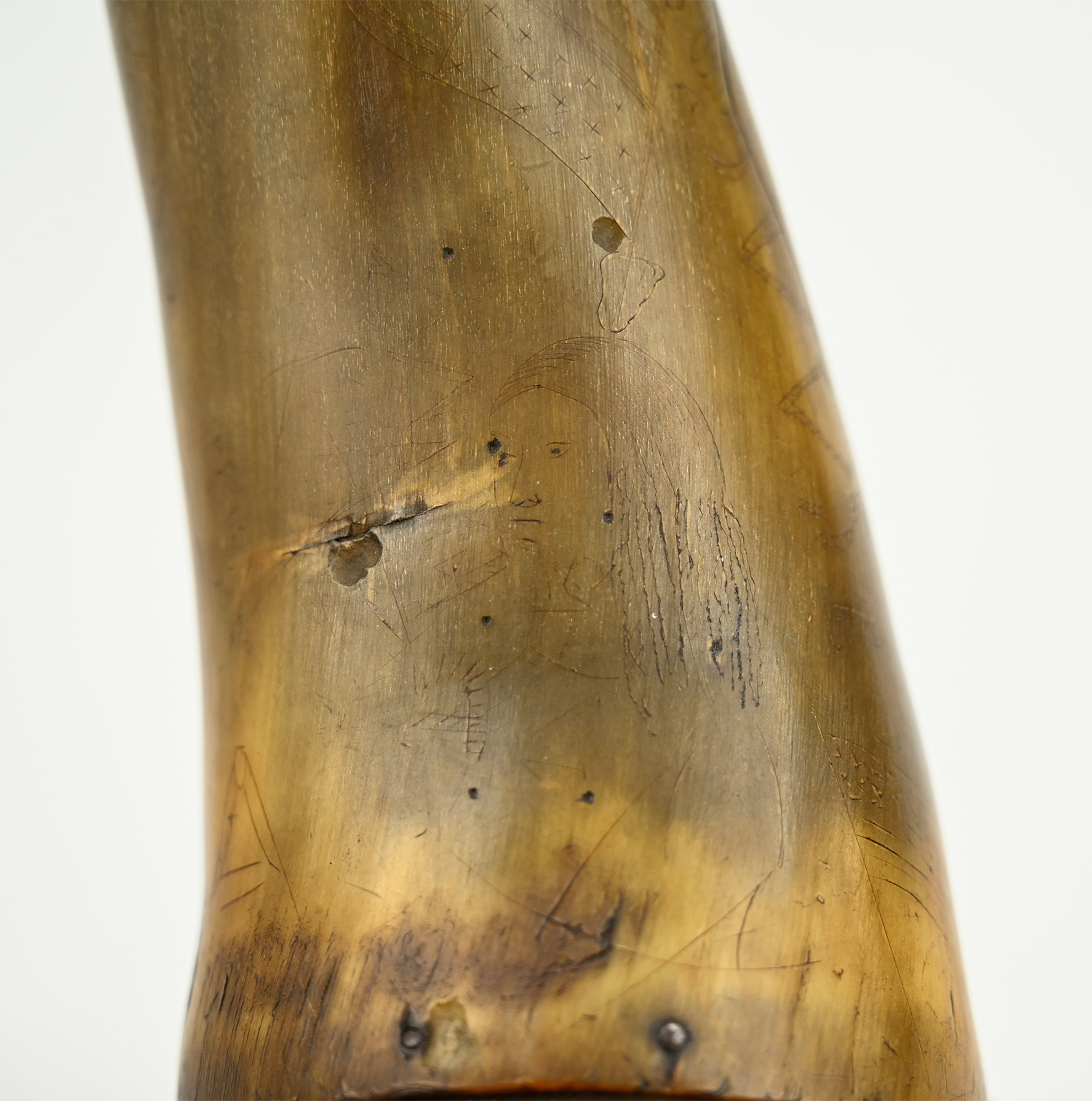
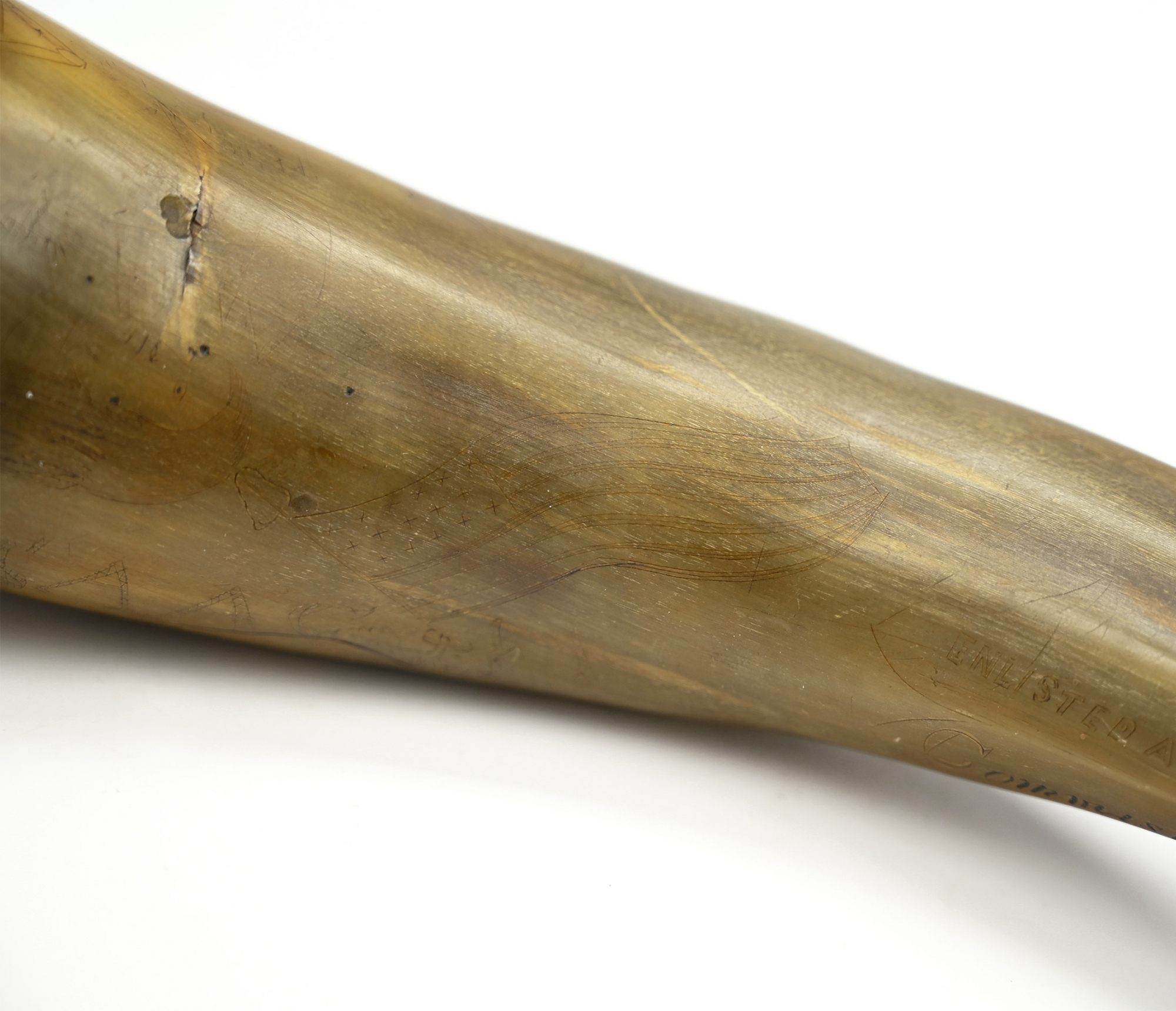
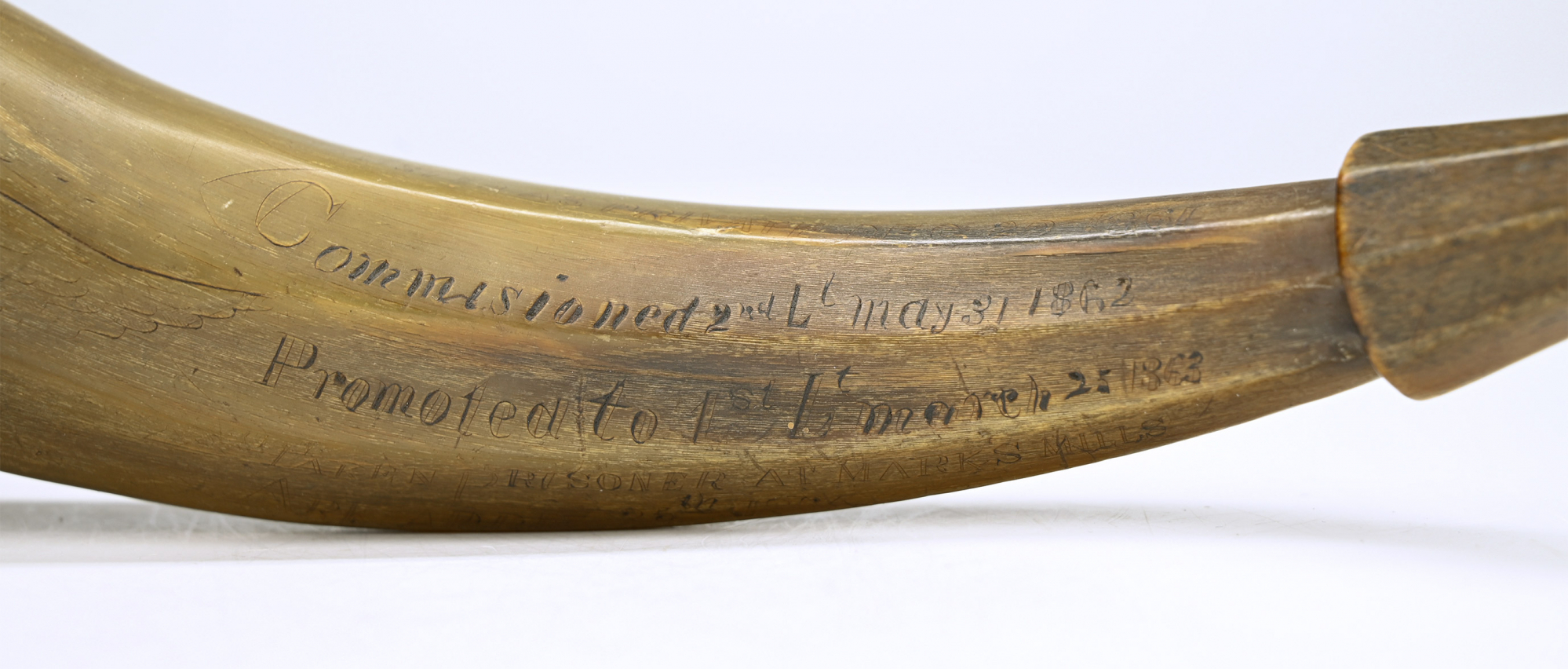
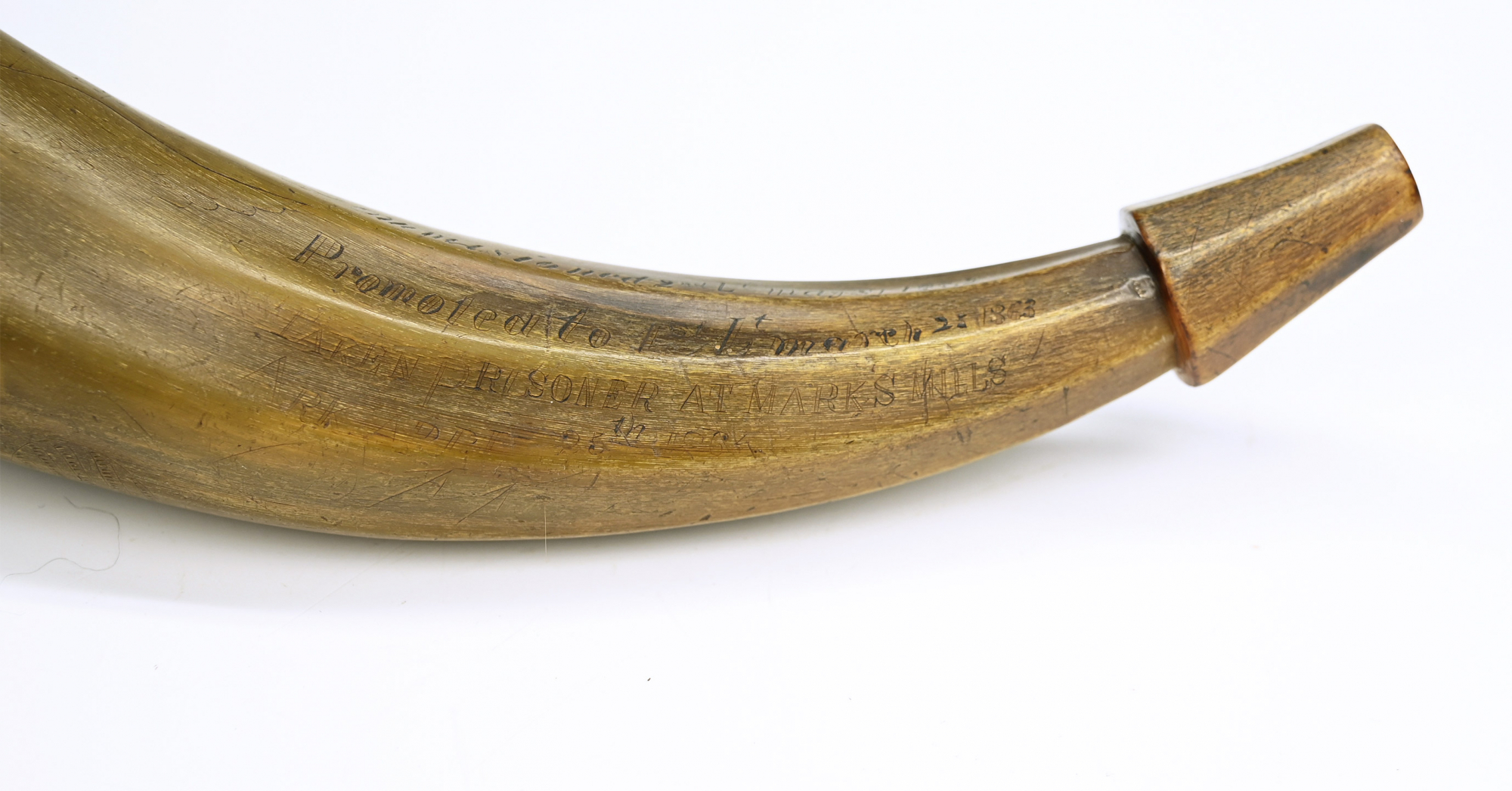
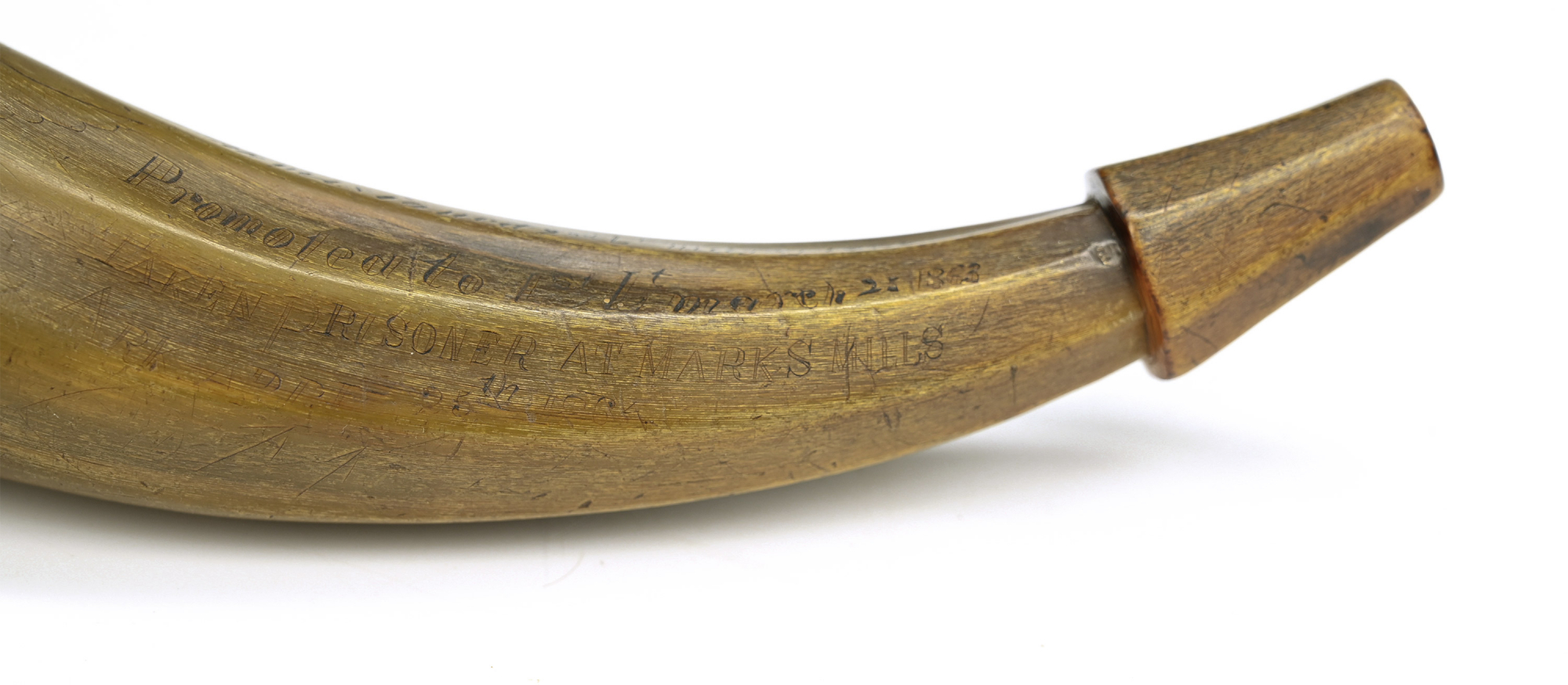
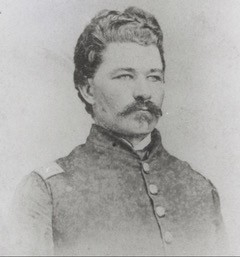
$4,500.00 ON HOLD
Quantity Available: 1
Item Code: 1179-2179
Formerly in the collections of the Texas Civil War Museum this powder horn was made by or for Lt. Robert E. Smithson, 77th Ohio, while a prisoner of war at Camp Ford, Tyler Texas, after being captured at Marks Mills, Arkansas, April 25, 1864, while escorting a wagon train.
Folk art was a good way to get through the forced inactivity of a prison camp and perhaps trade or even sell to fellow prisoners, guards, or curious civilian visitors. This is powder horn was certainly made from an animal slaughtered to feed the inmates, guards, or nearby troops, It measures roughly 11-inches from the tip of the spout to the base of the plug and a bit longer allowing for the large iron staple in the plug. The horn is well made, with faceted spout showing eight sides and the long neck carved with eight sides as well (one of them actually a channel rather than raised ridge,) with a bulbous, rounded hardwood (oak?) plug about 1-1/4 inches long pinned to the bottom, with a round-wire staple in it to secure the end of a carrying strap. The horn is decorated with carving in thin incised lines. The at lower center the face has “R.E. SMITHSON” in large block letters over “PRISONER OF WAR” in slightly smaller block letters. This these are carved to represent three-dimensional letters, though without dark shading, and appear in arc over a wreath made two sections with knot at bottom, surrounding “TYLER TEXAS” in an arc over “Sept. 23d / 1864,” with the place name rendered like lettering above it and the date simply shaded. To the left of this, just above the plug is a masonic apron with all-seeing eye on the cover flap, with a large compass at center of the bag with a sun in the middle, a large “G” to its left and another, small compass at its right.
Above these elements, on the middle portion of the horn, Lady Liberty stands at right, wearing a Liberty Cap and with one breast exposed, holding the staff of a US flag in her left hand and drawing a sword with her right, with a small US shield below the sword. She faces left, looking at a US flag, billowing, but rendered lengthwise, while beyond that, also rendered lengthwise is an eagle with outstretched wings, flying off, clutching another US flag in its claws, with the flag billowing out ahead and the staff carrying a Liberty cap as a finial. (On both flags the stars are rendered by X’s and the red stripes identified by cross-hatching (six on one flag, seven on the other, and twenty-one stars in each, arranged in 4 rows.
The neck of the horn is incised in smaller letters with Smithson’s service record, “ENLISTED AS PRIVATE DEC 20 1861 / Commissioned 2nd Lt. May 31 1862 / Promoted to 1st Lt March 25 1863 / TAKEN PRISONER AT MARKS MILLS / ARK APRIL 25 1864” Lastly, we note yet another small US flag along the lower edge of the horn, next to the masonic apron, and over that a well rendered woman’s face with long hair, and the name “ISAAC” in thin, cross-hatched letters, the last two of which run along the eagle’s wing. The name is possibly that of the carver, making and decorating it for Smithson while both were interned. They might possibly have been in the same regiment, but there men from quite a number of other units in the prison camp.
Smithson’s record is as it appears on the horn. He was born in 1831 and 29 years old when he enlisted in the 77th at Marietta, Ohio. They fought at Shiloh in April 1862 and at Fallen Timbers two days later, took part in the Siege of Corinth, and spent some time themselves as POW guards in Illinois in late 1862 to mid-1863, before being ordered to Arkansas. They were at Bayou Fourche and the capture of Little Rock, then the Camden Expedition, taking part in fights at Elkins Ferry and Prairie D’Ane. The Battle of Marks Mills resulted in the capture of more than 300 of its men, pretty much all who were present in the disaster, a large scale ambush of a Union wagon train with escorts sent by Gen. Frederick Steele out from Camden, Arkansas, where he was loosely besieged by Sterling Price after a defeat at Poison Springs. Steele was running short of supplies and sent out to Pine Bluff some 240 army wagons and 75 civilian wagons, with requisite teamsters, and roughly 1,800 troops – 3 infantry regiments, including the 77th Ohio, with cavalry and artillery detachments. They were delayed on April 24 by bad roads in crossing a bayou bottom and were attacked the next morning as they cleared it by forces under Confederate generals J.F. Fagan, W. Cabell, and Jo Shelby. Confederate losses were estimated at about 150 killed and wounded and almost that number missing, with the loss to Union forces of the entire wagon train and most of the escort. The remainder of the regiment with Steele, suffered further losses at the Battle of Jenkins Ferry, just five days later, as Steele pulled out of Camden.
Smithson was incarcerated with the other captured members of the regiment at Tyler, Texas, until he was exchanged on February 10, 1865, after ten months of captivity. He rejoined the regiment and in March 1865 was promoted Captain of Company E, and served until mustered out with the regiment at Brownsville, Texas, March 8, 1866.
Camp Ford had been transformed from a training camp to a prisoner of war camp in 1863, eventually expanding to three or four acres with a stockade and holding some 4,700 prisoners by the time Smithson and companions were added (332 from the 77th Ohio alone.) The total number incarcerated in the camp during its operation is estimated at 6,000 by some sources, with 286 deaths. Prisoner exchanges eased some of the overcrowding caused by the influx of 1864. There were about 1,200 remaining there when they were released in May 1865 and conveyed to Shreveport.
After leaving the army in 1866, Smithson returned to civilian life as a carpenter, married in 1868 and had at least four daughters, but his prison experience seems to have caught up with him. In 1880 he listed in the census as sick at home from “neurology” and in 1899 he was judged insane and committed to the Athens State Hospital in Ohio. A newspaper notice at the time says, “Mr. Smithson was a prisoner of war in the rebellion, and his form of insanity, which is violent, leads him now to believe he is a prisoner.” The 1900 census picks him up in the hospital. He died in 1901.
There is a sizeable file of refence material included with the horn, gathered by the museum, which includes articles on the camp and archeological studies of the site, along with Smithson’s records. The file mentions references in other sources to cattle delivered to the CS Commissary in Tyler, to prisoners using the horns for various projects, and to another scrimshawed powder horn in “the Tyler Museum.” Included with the horn are several copies of an artist’s rendition of the designs on the horn, one copy of which is framed. The horn is cream colored near the bottom and greenish brown toward the tip, in good condition, with the lettering near the spout small but deep. The other work tends to be thin and delicate, sometimes difficult to make out at first without a strong light, though the cuts were filled with brown ink, making the frame a useful display piece alongside it and appreciate the work. We also show a photo of Smithson in uniform from his online gravesite listing. Powder horns as souvenirs of military service likely had a strong appeal to soldiers who remembered horns hanging on the wall at home carried by ancestors in the Revolution and French and Indian War. [sr] [ph:m]
~~~~~~~~~~~~~~~~~~~~~~~~~~~~~~~~~~~
THIS ITEM, AS WITH ALL OTHER ITEMS AVAILABLE ON OUR WEB SITE,
MAY BE PURCHASED THROUGH OUR LAYAWAY PROGRAM.
CLICK HERE FOR OUR POLICIES AND TERMS.
THANK YOU!
Inquire About CIVIL WAR PRISONER OF WAR CAMP ART: CARVED POWDER HORN OF LT. ROBERT E. SMITHSON, 77TH OHIO, CARVED WHILE PRISONER AT TYLER TEXAS, SEPTEMBER 1863
Most Popular
Historical Firearms Stolen From The National Civil War Museum In Harrisburg, Pa »
Theft From Gravesite Of Gen. John Reynolds »
Selection Of Unframed Prints By Don Troiani »
Fine Condition Brass Infantry Bugle Insignia »
Large English Bowie Knife With Sheath 1870’S – 1880’S »
Imported (Clauberg) Us Model 1860 Light Cavalry Officer's Saber »
featured item
JULY 1863 LETTER BY FAMED COL. JOSHUA LAWRENCE CHAMBERLAIN OF THE 20TH MAINE
This letter comes from the hand of famed Colonel Joshua Lawrence Chamberlain of the 20th Maine and is written to his wife from his shelter tent in the Shenandoah Valley near Front Royal. Dated July 24th 1863, Col. Chamberlain details the fight of… (557-250). Learn More »


